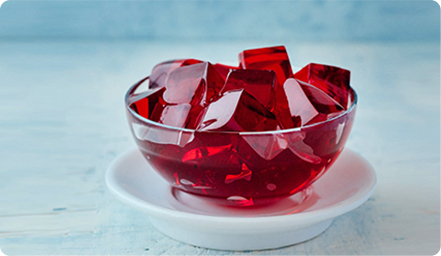-
July, 26,2025
Understanding the Role of Bloom Strength in Soft Gelatin Capsules
-
July, 25,2025
Bloom Strength and Its Impact on Hard Gelatin Capsules
-
July, 21,2025
How Gelatin Is Revolutionizing Pet Food: A Healthier Option for Dogs
-
June, 22,2025
Collagen as a Trusted Ingredient: Meeting Global Demand with Reliable Supply
What Gummy Candies Are Made of (Surprising Facts!)
Gummy candies are a favorite treat among most people. They are chewy, sugary, and brightly colored. But did you ever stop to think what's actually inside gummy candies? The contents might surprise you. From sugar to gelatin, every ingredient has a role. Let's look a bit closer and check out what gummies' raw ingredients are. You'll find out what is in making a gummy, well, a gummy—and possibly even resolve the issue over pig skin being used in gummy bears.
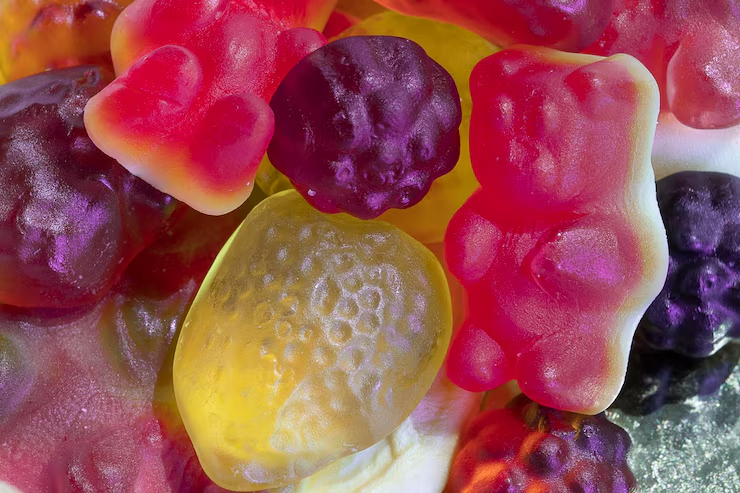
Gelatin: The Secret to Chewiness
Gelatin is the champion of gummy candies. It gives them their famous chew. Without gelatin, gummies would not keep their shape. So, what is gelatin? It is a protein. It comes from animal collagen. Collagen can be found in skin, bones, and connective tissues. They boil them up to get them. They then purify it into a powder or sheet.
Several wonder, "Are gummy bears derived from pig skin?" The response is yes, occasionally. Pig skin is a typical source of gelatin. Cow bones and hides are utilized as well. It just depends on the company. Some firms, such as Haribo, utilize pork gelatin in some offerings. Others may use beef instead. If this bothers you, read the label. Not all gummies identify the source.

Vegetarian gummies avoid the use of gelatin entirely. They use substitutes like pectin. Pectin is a fruit extract, e.g., apples or citrus fruits. It's not animal-based but still gives chewiness. Another substitute is agar, which is a seaweed extract. These alternatives change the texture a bit. They're less stretchy compared to gelatin-based gummies. However, they're appropriate for vegans or people who avoid animal-derived products.
It's not all about chew. Gelatin causes gummies to set up. It's simple. Melt gelatin in water. It becomes a liquid. Combine other ingredients. Pour it into molds. Cool it down. The mixture sets up in fun shapes, like bears or worms. That creates a gummy-ness in a gummy. The stretch and bounce come from this step.
Others are worried about the origin of gelatin. Is it safe? Yes. It's very processed. No bacteria or taste from the origin remains. It's pure protein when it gets to your candy. Nevertheless, the sound of pig skin or bones may be strange. That is why others go for plant-based gummies. Either way, gelatin—or its substitutes—dictates the gummy experience.
| Gelatin Source | Percentage |
| Pork Gelatin (Pig Skin) | 50% |
| Bovine Gelatin (Cow) | 35% |
| Fish Gelatin | 10% |
| Plant-Based (Pectin/Agar) | 5% |
Sweeteners: The Sweet Side of Gummies
Gummies must be sweet. It's the key part of their success. Sugar is the classic choice. It's quick and cheap. Manufacturers mix it into the gelatin base. It dissolves in heat. This creates a smooth, syrupy liquid. Most gummies employ cane or beet sugar. It's one of the greatest raw materials of gummies.
But there's more than a little sugar. Corn syrup's also a hit. It's liquid sugar. It keeps gummies soft. They'd dehydrate in an instant without it. Corn syrup stops sugar from crystallizing. That's what keeps it from being gritty. It's a trick candy makers love. Check a bag of gummies—corn syrup's usually inside.
Some gummies go sugar-free. They substitute with things like maltitol. Maltitol is a sugar alcohol. It's sweet but not so caloric. Other substitutes include stevia or erythritol. These preserve the taste without the sugar high. They're keto or diabetic-friendly. The trick? Too much will make your stomach queasy. Use moderation.
Sweeteners are not only tasty, though. They complement other flavors. Gummies are sour or tart. Sugar softens those bitter ends. It's a team player. Whatever it is, regular sugar or sugar substitute, sweetness is not negotiable. It's one of the ingredients that make up gummy candies. No sweet, no treat!
Looking for premium gelatin? Funingpu, a trusted edible gelatin manufacturer, offers FNP gelatin sourced from porcine, bovine, and fish origins. Their gelatin powder wholesale options meet strict safety standards, making them ideal for gummy makers worldwide.
Flavorings and Colorings
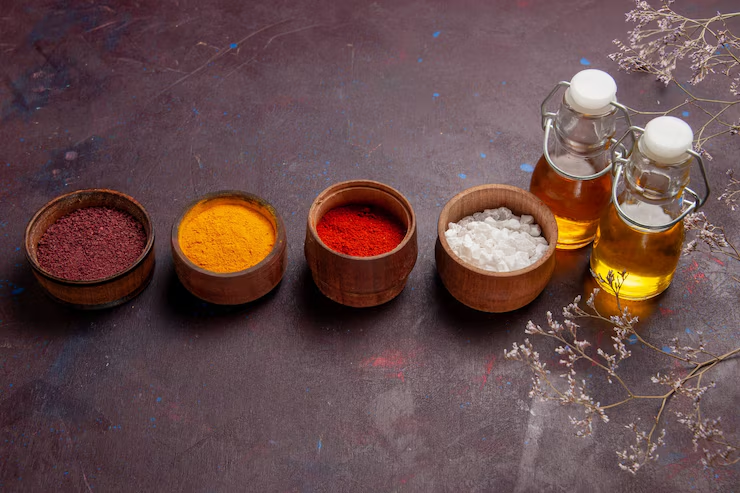
Flavor makes gummies fun. Otherwise, they'd just be chewy blobs. Natural flavors come from fruit. Strawberry, lemon, or grape, for instance. These start out as extracts. Manufacturers boil down fruit juice or peels. What remains is a concentrated flavor. It's blended into the gummy mix.
Artificial flavors are also well-liked. They're nature's copies but less expensive. Chemists create them in labs. They can duplicate any flavor, like cola or blue raspberry. Those aren't real fruits. They're sneaky copies. Most gummies use a mix of the two kinds. It helps keep things affordable and tasty.
Coloring brings gummies to life. Bright colors catch your eye. Natural colorings come from plants. Beet juice makes red. Turmeric makes yellow. These are simple and safe. But they don't last. That's why artificial colors take over. Red 40, Yellow 5, Blue 1—these are the norm. They're bright and long-lasting.
Some worry about dyes. Are they safe? Studies say small amounts are fine. Regulators allow them. Still, some brands go dye-free. They rely on natural coloring instead. It's a trade-off. The gummies might be less vibrant. But they appeal to health enthusiasts. Anyway, flavor and color dictate the gummy texture. They're key raw materials in gummies.
Pairing is crucial as well. Strawberry flavor gets red dye. Lemon gets yellow. It's psychology—color implies taste. What makes a gummy a gummy? Mostly this mix. Chewiness isn't enough. You also need that flavor burst and that bright look. It's the whole package.
Acids for Tanginess
Certain gummies do pack some punch. That pucker is because of acids. The big winner is citric acid. It exists naturally in citrus fruits. Take lemons and limes, for example. In gummies, it's powdered. It delivers a sour zing. When it's added in during the mix, that's what they use. It shocks your taste buds.
Malic acid's another possibility. It's not as tart as citric. Ever had a Warhead candy? That explosion of sour taste is malic acid at work. It naturally occurs in apples. Now, it's mass-produced in labs. It lingers longer, too. That's why some gummies get that zesty extra.
Acids aren't just about flavor. They're sweetness's opposite. There's too much of the bland stuff with sugar. A sour note keeps life exciting. It's a push-pull. Kids love it—sour gummies are flying off the shelf. Grown-ups love it too. Think of Sour Patch Kids or Trolli worms. That pucker isn't accidental.
Safety is not an issue. These are food-grade acids. You already ingest them in fruit. In gummies, they are simply more concentrated. They are part of what gummy candies are made of, especially sour ones. Without them, the taste is bland. Acids make gummies stand out.
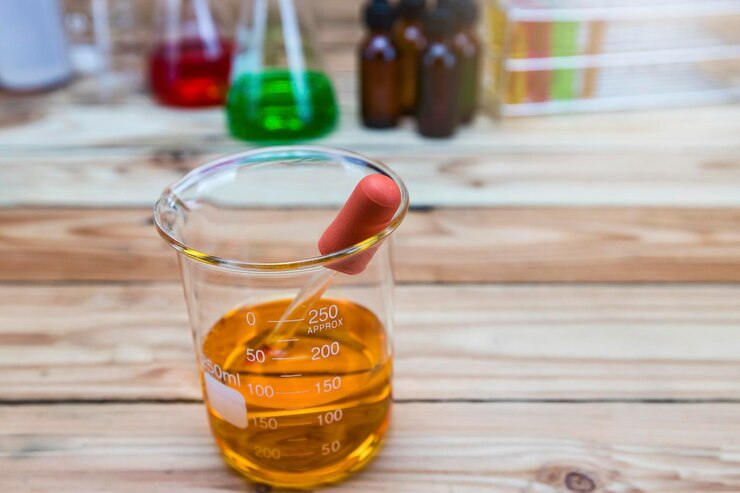
Coatings for Shine and Texture
Gummies glaze. That glaze is not magical. It's a coating. Carnauba wax is popular. It's palm frond-based. Manufacturers melt it down. They buff gummies with it. That creates a glossy finish. It also keeps them from sticking together. Nobody likes gummies sticking to each other.
Beeswax is effective, too. It's like I,t but in a soft form. Both are edible and organic. They're harmless in small amounts. Some gummies don't employ wax. They employ oils instead. Cornstarch is another. It's dusted on for the matte effect. This keeps them separated in the bag.
Sour gummies are treated extra specially. They're sprayed with sugar crystals. Sometimes it's mixed with citric acid. That enhances the sour kick. It adds crunch, too. Texture is just as crucial as flavor. A good coating makes the entire experience richer.
Coatings are not mere appearances. They protect gummies. Humidity can ruin them. Sealing with wax or starch saves them. It's practical and nice. What makes a gummy a gummy? Chewiness starts it. Coating finishes it. It's candy crown polish.
That crown shines brighter with FNP gelatin. As an edible gelatin manufacturer, Funingpu provides natural confectionery gelatin that works with coatings to deliver flawless texture and shine.
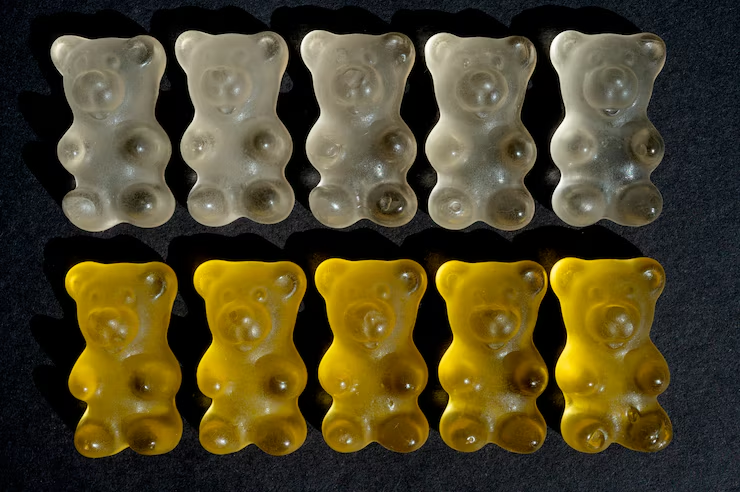
Final Thoughts
So, what gummy candies contain isn't so simple. Gelatin—or pectin—gives the chew. Sweeteners give a sugar rush. Flavors and colors give personality. Acids give tang. Coatings keep it all together. Every piece matters. All of them combined create that gummy magic.
The next time you grab a gummy bear, think twice. Do gummy bears have pig skin in them? Maybe. Or maybe it's cow gelatin—or maybe seaweed. Raw materials in gummies vary. Companies tweak recipes depending on price, taste, or diets. That's what makes a gummy a gummy—playfulness and versatility.
For gummy makers, quality starts with the right supplier. Funingpu, a premier gelatin manufacturer, offers gelatin powder wholesale and natural confectionery gelatin trusted by brands globally. Their FNP gelatin ensures every chew is perfect, whether you’re crafting classics or new flavors.
Love them or leave them, gummies are science. A delicious one. They're not just candy. They're a combination of smart ingredients. Now that you've learned the astonishing facts. Indulge your next handful!
FAQs
1. What gummy candies are made of?
Gelatin, sweeteners, flavors, colors, acids, and coatings make up gummy candies. FNP gelatin from Funingpu, a leading edible gelatin manufacturer, is a top choice for that chewy base.
2. Are gummy bears made from pig skin?
Some are. Others use cow gelatin or plant-based options. Check the brand.
3. What makes a gummy a gummy?
Chewiness from gelatin, plus sweetness and flavor, defines a gummy. Natural confectionery gelatin from Funingpu is perfect for chewing.
4. What are the raw materials in gummies?
Gelatin, sugar, corn syrup, flavorings, dyes, acids, and waxes are the basics. FNP gelatin provides the premium gelatin kickstart.
5. Can gummies be vegan?
Yes. They use pectin or agar instead of gelatin.
Phone: +86-577-88105990
Mobile: +86-138 5886 1938
Official Website: www.fnp-gelatin.com
Email: sales@funingpu.com
Address: No. 1-10 Wenpu Road, Yacheng Town, Xiapu County, Ningde City, Fujian Province

